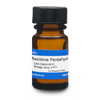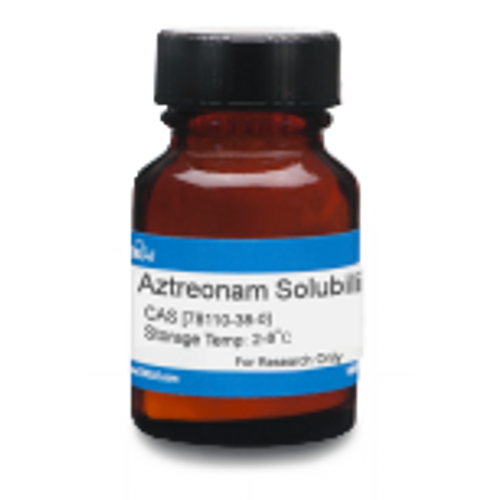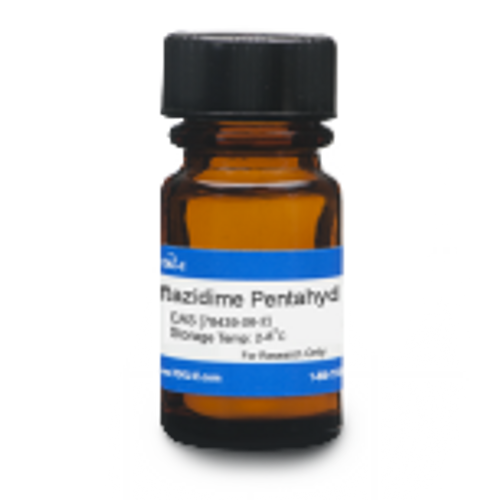Ceftazidime Solubilized is a semi-synthetic, broad-spectrum, third-generation, β-lactam cephalosporin. Patented in 1978, it came into commercial use in 1984. Ceftazidime is bactericidal in action, inhibiting enzymes responsible for bacterial cell-wall synthesis, primarily penicillin binding protein 3 (PBP3). The compound is sparingly soluble in aqueous solution, but acidic and alkali solvents are commonly used to facilitate dissolution.
We also offer:
- Ceftazidime Hydrochloride (C020)
- Ceftazidime Pentahydrate (C059)
- Ceftazidime, Delta-3-Isomer, EvoPure® (C121)
| Mechanism of Action | Like β-lactams, cephalosporins interfere with PBP (penicillin binding protein) activity involved in the final phase of peptidoglycan synthesis. PBP’s are enzymes which catalyze a pentaglycine crosslink between alanine and lysine residues providing additional strength to the cell wall. Without a pentaglycine crosslink, the integrity of the cell wall is severely compromised and ultimately leads to cell lysis and death. Resistance to cephalosporins is commonly due to cells containing plasmid encoded β-lactamases, however, ceftazidime is stable in the presence of β-lactamases. |
| Spectrum | Ceftazidime is broad-spectrum, targeting both Gram-negative and Gram-positive bacteria, but is most effective for Gram-negative strains including Pseudomonas aeruginosa. It is also used against Streptococus pneumoniae, and S. pyogenes. It is effective against Enterobacteriaceae (including β-lactamase positive strains). |
| Microbiology Applications | Ceftazidime is commonly used in clinical in vitro microbiological antimicrobial susceptibility tests (panels, discs, and MIC strips) against Gram- negative microbial isolates. Medical microbiologists use AST results to recommend antibiotic treatment options. Representative MIC values include:
Media SupplementsCeftazidime can be used as a selective agent in several types of isolation media: PALCAM Agar - PALCAM Selective Supplement ChromogenicListeria Agar - Chromogenic Listeria Selective Supplement ChromogenicListeria Agar - Chromogenic Listeria Differential Supplement |
| Solubility | Sparingly soluble in aqueous solution. Organic solvents used to facilitate dissolution. |
| References | Fischer J, Ganellin R (2006) Analogue-based Drug Discovery. John Wiley & Sons. p. 495 Gunther EC et al (2019) Rescue of transgenic Alzheimer’s pathophysiology by polymeric cellular prion protein antagonists. 26(1):15-158 |








